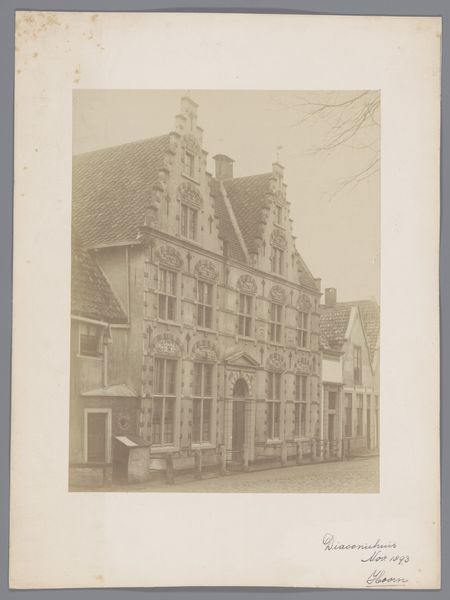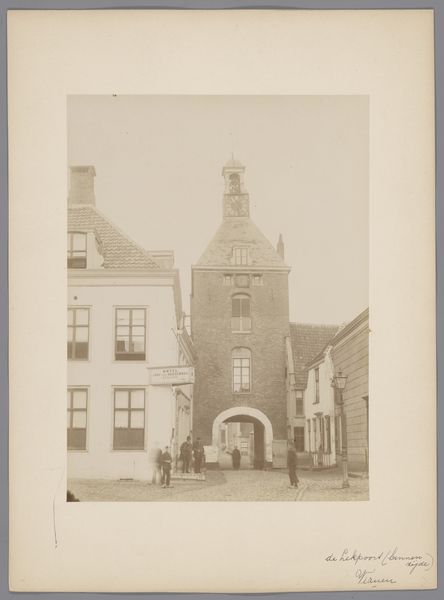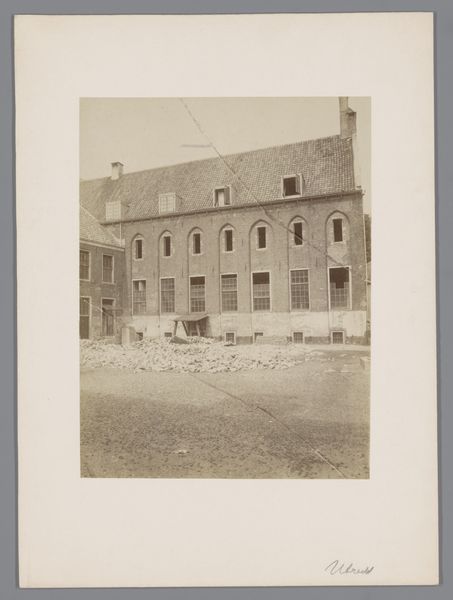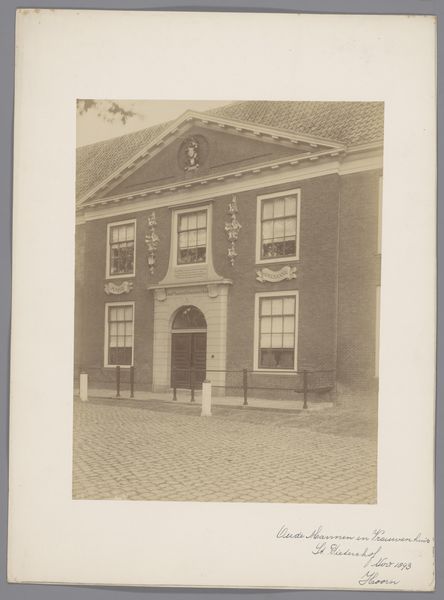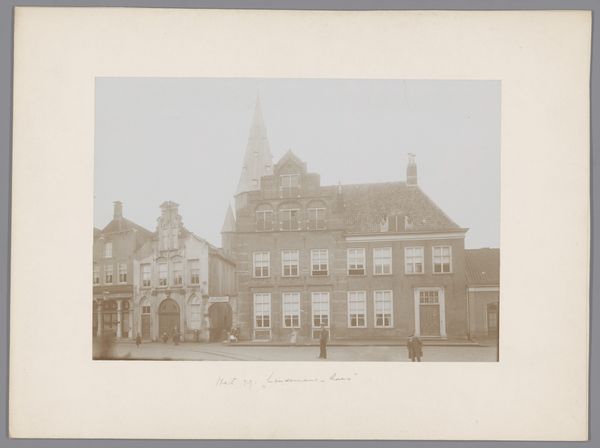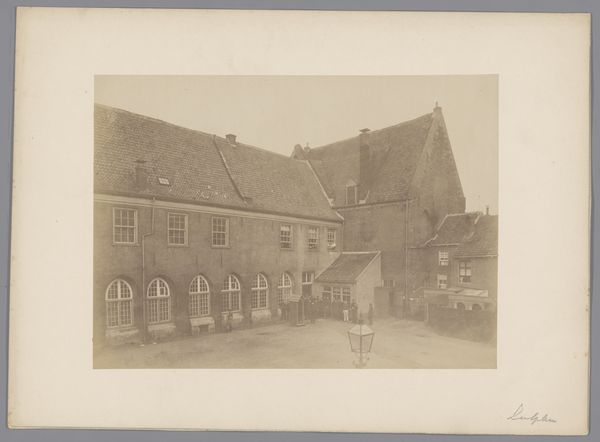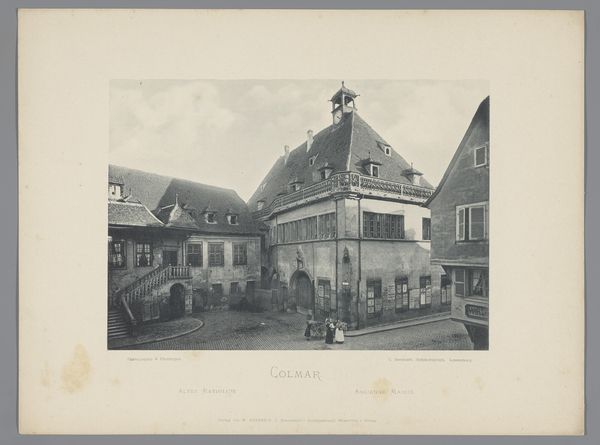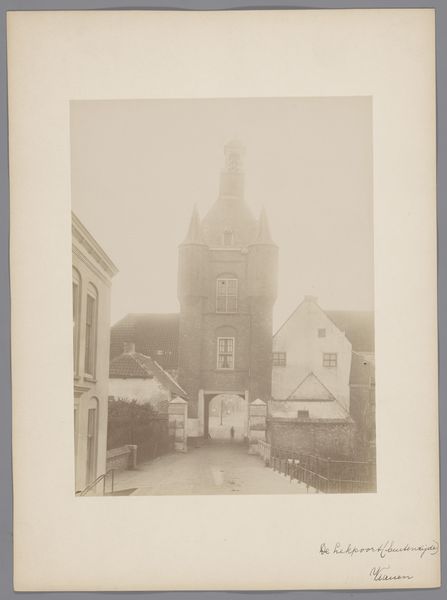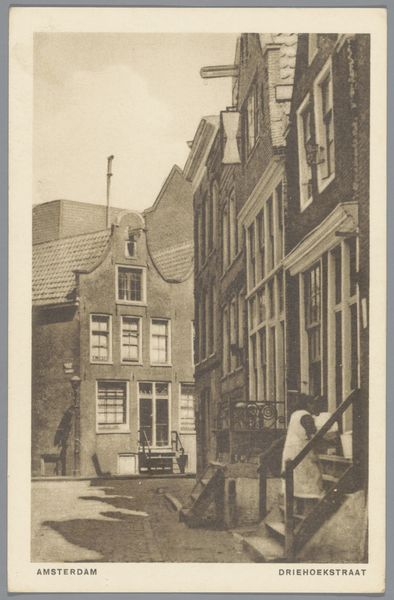
Dimensions: height 167 mm, width 230 mm
Copyright: Rijks Museum: Open Domain
Editor: This photograph, titled "View of the Former Agnietenklooster in Utrecht," dates from 1890 to 1910 and the artist is anonymous. The monastery's facade seems imposing but also somewhat austere. What kind of symbols and historical meanings are layered in this piece? Curator: A former monastery rendered in tones of sepia evokes themes of memory and enclosure, doesn't it? The windows, almost like watchful eyes, could symbolize both divine observation and the constrained perspective of monastic life. The heavy brickwork – what stories do you think it carries, having stood for so many decades? Editor: It definitely gives me a feeling of permanence, but also a sense of secrets held within those walls. Were these monasteries important centers of cultural preservation? Curator: Precisely. Consider the Agnietenklooster's function. Monasteries historically preserved manuscripts and knowledge, becoming beacons of cultural memory during turbulent times. Its visual prominence suggests its symbolic importance in Utrecht. Note the repeating arches, each one holding a window: could this pattern evoke the rhythmic structure of prayer, meditation, daily life? Editor: It's almost like a visual mantra, you're right! So the image preserves not just a building, but an entire way of life and its intellectual contributions? Curator: Indeed. Photographs such as this do not merely document architecture; they act as cultural palimpsests, capturing layers of meaning for us to unpack and understand the legacies they represent. Does that understanding of symbolic weight influence your appreciation of this work? Editor: Absolutely. I now see how the photograph serves as a powerful reminder of the monastery's cultural endurance through time. Curator: And that deeper connection, that realization of shared memory through visual representation, enriches how we interpret any artwork from the past.
Comments
No comments
Be the first to comment and join the conversation on the ultimate creative platform.



